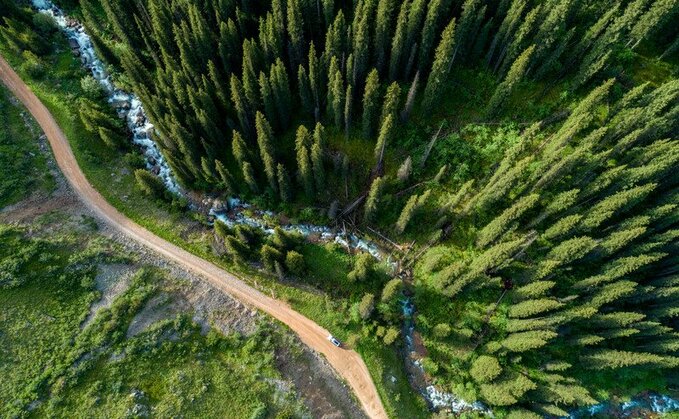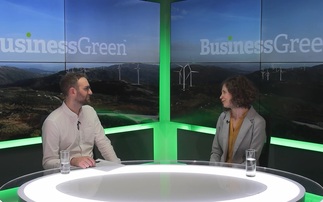
Industry Voice: From UNFCCC to NDCs and IPCC to 1.5°C, nature-based solutions and the just transition – a pre-climate summit jargon-buster for investors
Ahead of world leaders gathering in Egypt for the COP27 climate summit in November, here is an A-Z of common terms:
1.5°C
This is the global temperature rise above pre-industrial levels targeted by the 2015 Paris Agreement. The hope is that limiting global warming to 1.5°C could stave off catastrophic impacts from droughts, storms and flooding.
Abatement
The curbing of emissions to reduce the concentration of greenhouse gases such as carbon dioxide and methane in the environment.
Anthropogenic
Resulting from human beings.
Adaptation
Adjusting to current or expected effects of climate change, such as building defences to protect against rising sea-levels, to reduce risk or benefit from opportunities where possible.
AR6
The Sixth Assessment Report of the United Nations Intergovernmental Panel on Climate Change. The latest in a series of reports to assess scientific knowledge on climate change.
Article 6
Article 6 of the Paris Agreement sets out how countries can "pursue voluntary cooperation" to reach their climate targets. Following years of delays, at COP21 last year countries agreed on rules for the implementation of international carbon market mechanisms.
Avoided emissions
The emissions reductions that occur through the replacement of a high-carbon emitting activity with a low-carbon emitting one. These reductions cannot be reflected in a product's or an activity's carbon footprint as measured by the greenhouse gases it emits. But they help reduce economy-wide total emissions.
Biodiversity
Biological diversity is the variability of life on earth, from genes to species to ecosystems.
Black carbon
Commonly known as soot, it is formed from wildfires and fossil fuel consumption and contributes to climate change.
Carbon market (including carbon offsets)
A trading system in which countries or companies can trade carbon credits or offsets in order to comply with national limits. Those markets can be either regulated (reflecting laws requiring companies to secure credits in proportion to their emissions) or voluntary (where buyers choose to acquire credits generated by carbon-reducing activities).
Carbon sequestration
The process of capturing and storing carbon dioxide, for example through forest regrowth.
Climate finance
Finance that is used to tackle climate change. It can either be used to reduce carbon emissions or promote ways in which to adapt, mitigate and build resilience to the effects of climate change.
In 2015, developed countries committed to coming up with $100 billion per year by 2020 to tackle climate change in developing countries.
Conference of the Parties (COP)
COP is the decision-making body responsible for monitoring and reviewing implementation of the UNFCCC.
Energy transition
This refers to the global energy sector's shift from energy consumption and production based on fossil fuels to low carbon sources.
Glasgow Climate Pact
The name for the agreement reached at the 2021 UN climate conference in Glasgow, COP26. It is the first to explicitly reference reduction of unabated coal usage.
Intergovernmental Panel on Climate Change (IPCC)
A body of the UN responsible for increasing knowledge on climate change.
Hydrofluorocarbons (HFCs)
Industrial chemicals, mainly used for cooling and refrigeration, which are potent greenhouse gases and contributing to climate change.
Just transition
A transition to a low carbon global economy that does not unduly disadvantage weaker economies or parts of societies.
Kyoto Protocol
An international agreement adopted in 1997 to implement the objective of the UNFCCC to reduce emissions. It is named after the Japanese city in which it was adopted.
Methane
A greenhouse gas which is impacting climate change. Composed of carbon and hydrogen, it enters the environment through livestock, leaks from natural gas systems, landfills and waste from homes and businesses.
Mitigation
Efforts to reduce or prevent greenhouse gas emissions.
Paris Agreement
The legally binding international treaty on climate change adopted at COP21 in Paris in 2015. It is also referred to as the Paris Accords. It requires countries to make commitments and progressively strengthen them. The Paris Agreement target is to reduce global greenhouse gas emissions to less than 2°C above pre-industrial levels, preferably less than 1.5°C. As well as mitigation, the Paris Agreement covers adaptation and climate finance.
Nationally Determined Contributions (NDC)
Individual countries' emissions reduction targets and plans to adapt to climate impacts. They're updated every five years to ensure they're in line with global temperature targets.
Natural capital
The term is used to describe elements of nature that provide important benefits called "ecosystem services". These include CO2 sequestration or removal, protection from soil erosion and flood risk, habitats for wildlife, pollination and spaces for recreation and wellbeing.
Nature-based solutions
Actions that protect, sustainably manage and restore the natural environment, such as reversing deforestation and accelerating the transition to sustainable agriculture.
Net zero emissions
When the amount of carbon emitted equals the amount of carbon being removed from the atmosphere (either through the purchase of carbon credits or carbon offsets). In this way the overall position is one of 'net zero carbon emissions'.
Scope 1 emissions
Direct emissions within a company's organisational boundary from sources the company owns or controls, including company vehicles and combustion of fuel in a company plant.
Scope 2 emissions
Indirect emissions from purchased or acquired electricity, steam, heat and cooling.
Scope 3 emissions
All other indirect emissions, for example business travel, deliveries, commuting or waste from a company supply chain.
Short-lived Climate Pollutants (SLCPs)
SLCPs include black carbon, methane, and hydrofluorocarbons (HFCs).
Sustainable Development Goals (SDGs)
A collection of 17 interlinked UN goals intended to be achieved by 2030. They were set up in 2015, and developed from the UN Millennium Development Goals. Goal 13 is Climate Action.
United Nations Framework Convention on Climate Change (UNFCCC)
The UNFCCC was signed by around 150 countries in Rio de Janeiro in 1992 at the UN Conference on Environment and Development. It is the initial agreement that acknowledged the threat of climate change and has formed the basis of further agreements such as the Kyoto Protocol and Paris Agreement.
Zero emission
This means emitting no greenhouse gases to the atmosphere.
This article was sponsored by Schroders.
Read more sustainability insights from Schroders >







